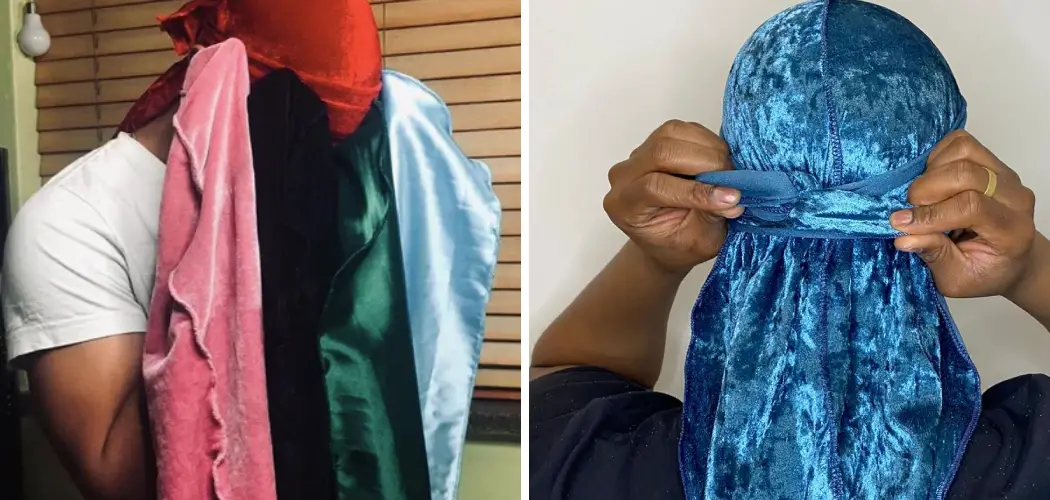Velvet durags are a popular accessory for maintaining hairstyles and creating waves, but their luxurious texture requires special care to keep them looking their best. Unlike other fabrics, velvet can be delicate and prone to damage if not cleaned properly.

In this guide on how to wash velvet durag, we will walk you through the steps to wash your velvet durag effectively and safely, ensuring that it remains in pristine condition. Whether you’re wearing your durag for fashion or functionality, these tips will help you preserve its soft feel and elegant appearance.
What is Velvet?
Velvet is a type of woven, tufted fabric known for its soft, smooth texture and luxurious appearance. It is characterized by a dense pile of evenly cut fibers that give it a distinctive sheen and a plush feel. Historically, velvet was made from silk, making it highly prized and expensive.
Nowadays, velvet can also be made from various materials, including cotton, polyester, or a blend of synthetic fibers, which makes it more accessible while retaining its characteristic richness. Due to its opulent look and feel, velvet is widely used in fashion, upholstery, and accessories, offering both elegance and comfort.
Why is it Important to Wash Velvet Durag Properly?
Velvet is a delicate fabric that requires gentle handling, especially when it comes to washing. If not cleaned correctly, the fibers can become damaged or distorted, leading to loss of sheen and softness. Additionally, velvet can be prone to staining and discoloration due to its plush texture that easily traps dirt and oil.
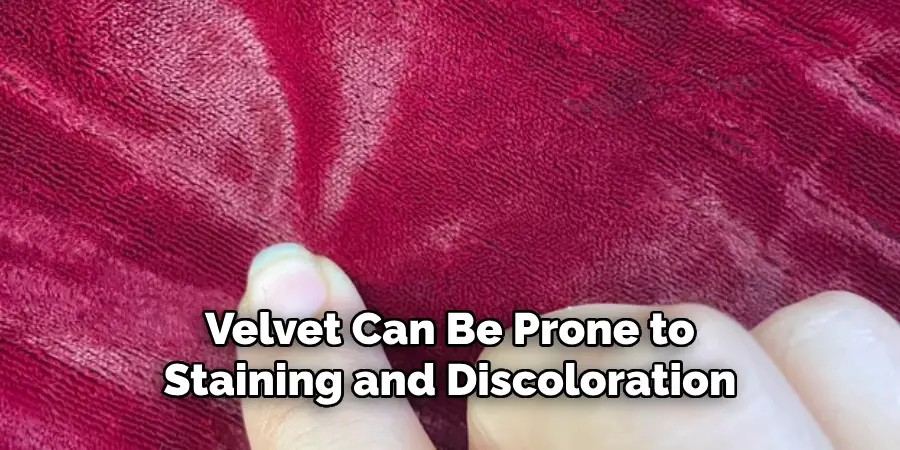
When it comes specifically to velvet durags, they are often worn for extended periods, making proper cleaning essential for maintaining hygiene and preventing odor buildup. Regular washing also helps maintain the shape and structure of your durag, ensuring it stays in mint condition for longer.
What You Will Need
A Sink or Basin:
To wash your velvet durag, you will need a clean sink or basin that can hold enough water to fully immerse the durag. Ensure the sink or basin is clean of any residues or contaminants that could be transferred to the delicate fabric. Using a sink or basin allows for better control over the washing process, ensuring that the velvet is treated gently and with care.
Mild Detergent:
When washing velvet, it is essential to use a gentle detergent that does not contain harsh chemicals or bleaching agents. These can cause the fabric to lose its luster and become discolored. Look for detergents specifically designed for delicate fabrics, or opt for a mild soap instead.
Soft Towel:
To dry your velvet durag, you will need a soft towel that won’t snag or damage the delicate fibers. Avoid using rough towels or ones with zippers or buttons that could catch on the fabric. A microfiber towel is an excellent option as it is soft and absorbent without being abrasive.
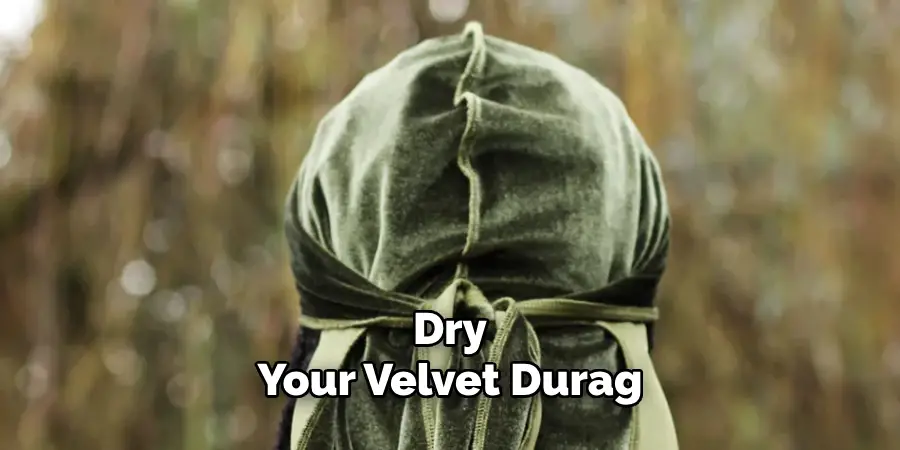
10 Step-by-step Guidelines on How to Wash Velvet Durag
Step 1: Prepare the Sink or Basin
To begin, make sure your sink or basin is thoroughly cleaned before filling it with water. Use mild soap to wash away any leftover residues or contaminants, then rinse well. Fill the sink or basin with lukewarm water, ensuring the temperature is not too hot, as excessive heat can damage the velvet fabric.
Adding a small amount of mild detergent to the water, mix it gently with your hand until it is well-dissolved. This sets the stage for a thorough yet gentle cleaning process of your velvet durag.
Step 2: Submerge the Durag in Water
Gently place your velvet durag into the sink or basin filled with lukewarm, soapy water. Ensure the entire durag is fully submerged, allowing the water and detergent to penetrate the fabric thoroughly. Use your hands to gently agitate the water, swirling the durag softly to help loosen any dirt or oils trapped within the fibers.
Avoid scrubbing or twisting the fabric, as this can damage the delicate velvet pile. Let the durag soak for about 5 to 10 minutes to ensure the detergent has time to effectively clean the fabric.
Step 3: Rinse the Durag
After soaking, carefully lift the velvet durag from the soapy water, allowing excess water to drain back into the sink or basin. Rinse the sink or basin, ensuring all soap residue is removed, and fill it again with fresh, cool water. Submerge the durag in the clean water to rinse out the detergent.

Gently swish the durag in the water, repeating the process until all soap has been washed out and the water runs clear. Be cautious not to wring or twist the fabric, as this can cause damage. Instead, softly press the durag against the side of the sink or basin to remove excess water.
Step 4: Remove Excess Water
Once the velvet durag has been thoroughly rinsed, it is crucial to remove excess water without causing damage to the fabric. Gently press the durag between your hands to squeeze out as much water as possible. Avoid wringing or twisting the fabric, as this can distort the velvet pile.
After removing the initial excess water by hand, lay a soft, absorbent towel flat on a clean surface. Place the durag on the towel and roll it up, applying slight pressure as you go to help the towel absorb more moisture. This method aids in further reducing the water content while maintaining the integrity of the velvet’s texture.
Step 5: Lay the Durag Flat to Dry
After removing excess water, carefully unroll the towel with the durag inside. Gently shake out the durag to help it regain its shape and smooth out any wrinkles. Next, lay a dry, clean towel on a flat surface, such as a countertop or table. Place the velvet durag carefully on top of the towel, making sure it is laid out evenly without stretching or bunching up. Smooth out any wrinkles or folds by hand before leaving it to air dry completely.
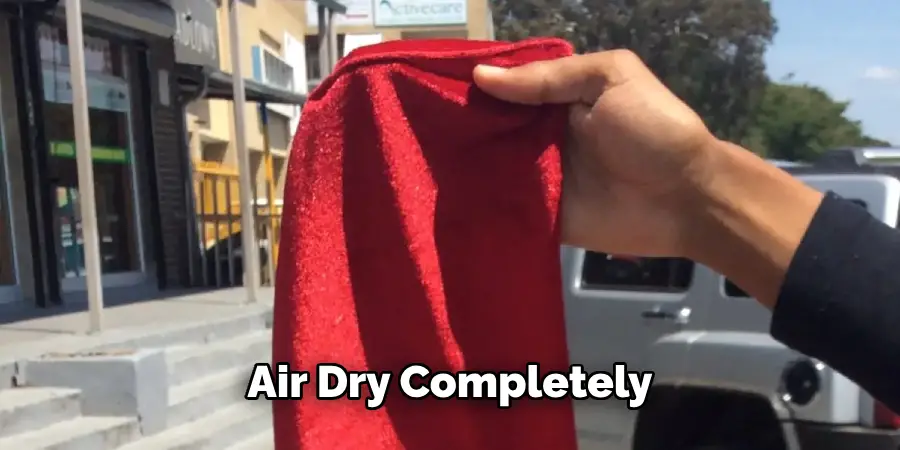
Step 6: Avoid Direct Sunlight
When drying your velvet durag, it is important to keep it out of direct sunlight. Exposure to the sun’s ultraviolet rays can cause the rich colors of the velvet to fade and may weaken the fabric’s fibers over time. Instead, place the durag in a well-ventilated, shaded area where it can air dry naturally.
This will help preserve the vibrant appearance and luxurious texture of the velvet. If possible, you can also use a fan to facilitate quicker drying, ensuring that the air circulates around the fabric without causing any damage.
Step 7: Do Not Use a Dryer
Avoid using a dryer to dry your velvet durag, as this can cause significant damage to the delicate fabric. High heat and tumbling can cause the velvet pile to mat or become distorted, ruining its soft texture and sheen. Additionally, the dryer’s heat may also cause shrinkage, affecting the fit of your durag. Always opt for air drying instead. The process may take longer, but it is worth the effort to maintain the quality of your velvet durag.
Step 8: Avoid Using Irons or Steamers
Similar to dryers, irons and steamers should also be avoided when caring for your velvet durag. The high heat can cause the delicate fabric to scorch or shrink, leaving permanent damage. Instead, gently smooth out any wrinkles or creases by hand while the durag is still damp before laying it flat to dry.
This will help preserve the shape and texture of your durag without risking damage from heat. It is also essential to avoid placing any heavy objects on the durag while it is drying, as this can cause distortion or flattening of the velvet pile.
Step 9: Store in a Dry Place
Once your velvet durag is completely dry, it is essential to store it properly to maintain its quality. Avoid storing in humid or damp environments, as this can cause mold and mildew growth on the fabric. Instead, opt for a dry place with good air circulation, such as a drawer or closet.

You can also use a breathable storage bag or container specifically designed for delicate fabrics like velvet. It is also essential to avoid placing any heavy objects on top of the durag while storing, as this can cause flattening of the velvet pile.
Step 10: Spot Cleaning
In between washes, you can spot-clean any stains or spills on your velvet durag. Mix a small amount of mild detergent with water to create a gentle cleaning solution. Dip a soft cloth or sponge into the mixture and gently dab at the stain, being careful not to rub it in further.
Afterward, use a clean, damp cloth to remove any excess soap residue, then pat dry with a towel. Always test the cleaning solution on a small, inconspicuous area first before applying it to the stain to avoid any potential damage to the fabric.
Following these steps on how to wash velvet durag will help you maintain the quality of your velvet durag and ensure that it remains a stylish and essential accessory in your wardrobe for a long time. Don’t forget to also regularly replace your durag when needed, as over time, the fabric may start to lose its elasticity and shape.
With proper care, your velvet durag will continue to provide you with laid waves and add a touch of luxury to any outfit. So go ahead and rock that velvet durag with confidence! Keep your waves looking fresh and fly while also taking care of your durag so that it can take care of you.
Additional Tips for Caring for Velvet Durags
- Avoid using bleach or harsh chemicals on velvet durags as this can cause discoloration and damage to the fabric.
- If your durag has a logo or design, avoid rubbing or scrubbing over it when washing and drying to prevent fading or distortion of the design.
- Always read and follow any specific care instructions on your velvet durag’s label, if applicable.
- If you accidentally spill something on your durag, gently blot with a clean cloth as soon as possible to minimize staining.
- Avoid wearing jewelry or accessories that may catch and pull at the delicate velvet fabric while wearing a durag.
By following these additional tips along with the steps outlined above, you can ensure that your velvet durags stay in top condition for all your wave needs.

Storage and Maintenance
Proper storage and maintenance are crucial to ensure the longevity and appearance of your velvet durag. Here are some additional guidelines to follow:
Rotate Your Durags
It is beneficial to have multiple velvet durags in your collection. Rotating them frequently allows each one to rest between uses, helping to maintain their elasticity and shape. This practice also minimizes the wear and tear on any single durag.
Use Breathable Storage
Store your velvet durags in a cool, dry place. Use breathable storage solutions, such as cloth bags or containers designed for delicate fabrics, to prevent moisture buildup and allow proper air circulation. Avoid plastic bags or airtight containers, which can trap humidity and lead to mildew growth.
Keep Away from Sharp Objects
When storing your durags, be mindful of sharp objects or rough surfaces that could snag the fabric. Keep them in a drawer free from items like scissors, pins, or jewelry that could potentially damage the velvet.
Regular Inspections
Regularly inspect your velvet durags for any signs of wear, such as thinning fabric, loose threads, or loss of elasticity. Address these issues promptly by gently trimming any loose threads or considering a replacement if the durag has become excessively worn.
Gentle Handling
When handling your velvet durag, always be gentle to avoid stressing the fabric. Fold or lay it flat neatly when not in use, rather than crumpling it up, to preserve its shape and texture.
By incorporating these storage and maintenance tips into your routine, your velvet durags will continue to serve you well, keeping your waves looking fresh and maintaining their luxurious appearance.
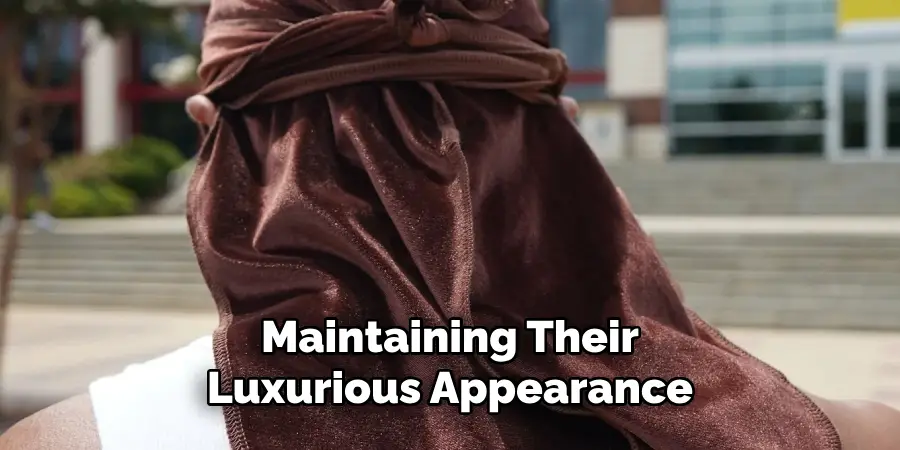
Repair and Restoration
Even with the utmost care, your velvet durag may occasionally require repair or restoration to maintain its optimal appearance and function. Here are some strategies to help you address common issues:
Address Loose Threads
If you notice any loose threads on your velvet durag, it’s important to address them promptly to prevent further unraveling. Using small, sharp scissors, carefully trim the loose threads as close to the fabric as possible. Avoid pulling on the threads, as this can cause additional damage.
Restoring Flattened Pile
Velvet has a unique pile that can become flattened over time or after improper storage. To restore the plush texture, use a soft-bristled brush to gently fluff up the nap of the fabric. Brush in various directions to lift the fibers uniformly. If needed, you can lightly steam the velvet from a distance to aid in reviving the pile but avoid direct contact with steam to prevent heat damage.
Repairing Minor Tears
Minor tears or holes in the velvet can often be mended with careful hand stitching. Use a needle and thread in a color that matches your durag, and employ a small, tight stitch to close the tear. Be gentle to avoid creating puckers in the fabric and ensure the seam lies flat when finished.
Stain Removal
For stubborn stains that spot cleaning does not remove, consider using a dry-cleaning solvent designed for delicate fabrics. Apply the solvent to a clean cloth and dab gently at the stain, always testing on a small, inconspicuous area first. If the stain persists, professional cleaning might be necessary to avoid causing damage to the velvet.
Professional Restoration
For significant damage or if you’re uncertain how to proceed with repairs, consider taking your velvet durag to a professional fabric restoration service. Experts in textile care can often restore your durag to its former glory, saving you the cost of replacement and preserving its unique qualities.
By incorporating these repair and restoration techniques, you can extend the life of your beloved velvet durag, ensuring it remains both functional and stylish. Regular maintenance combined with prompt repairs will keep your durag looking its best for years to come.
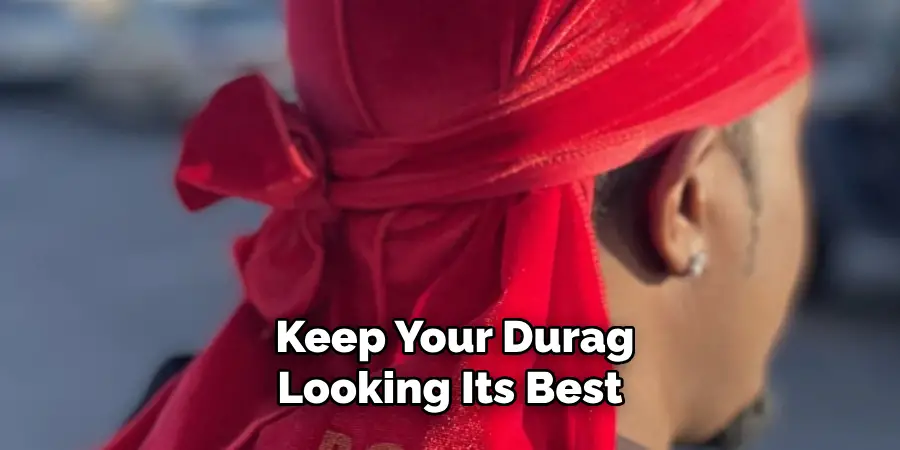
Frequently Asked Questions
Q: Can I Wash My Velvet Durag in the Washing Machine?
A: While it is possible to wash your velvet durag in a gentle cycle on cold water, it is not recommended as the agitation and spinning of the machine may cause damage to the delicate fabric. Hand washing or spot cleaning is still the best method for caring for velvet durags. The same goes for using a dryer – it is best to avoid it and opt for air drying instead.
Q: How Often Should I Wash My Velvet Durag?
A: It is recommended to wash your velvet durag after every few uses, especially if you sweat a lot or have any noticeable stains on it. However, if you are not using it frequently, you can wash it less often. Just be sure to properly store and air out your durag in between uses to prevent any odors or mildew growth.
Q: What is the Best Way to Dry My Velvet Durag?
A: The best way to dry your velvet durag is by laying it flat on a clean towel or drying rack. Avoid wringing or twisting the fabric as this can cause damage. Gently press with a towel to remove excess water before allowing it to air dry completely.
Q: Can I Iron My Velvet Durag?
A: No, ironing should be avoided for velvet durags as the high heat can damage and flatten the velvet pile. If you need to remove wrinkles, gently smooth them out by hand while the durag is still damp before laying it flat to dry.
Conclusion
Taking proper care of your velvet durag is essential not only for maintaining its luxurious appearance but also for ensuring that it performs well in keeping your waves laid. By adhering to the step-by-step care instructions and additional tips provided, you can prolong the life and quality of your durag.
Remember, the key aspects of velvet durag care involve avoiding high heat, harsh chemicals, and heavy objects that can distort the fabric. Regular and gentle cleaning, appropriate storage, and mindful usage will keep your durag in top condition.
With diligent care, your velvet durag can remain a stylish and functional accessory for years to come, allowing you to wear it confidently and keep your waves looking fresh. Thank you for following this guide on how to wash velvet durag, and enjoy the elegance and efficacy your well-maintained velvet durag brings to your routine.

